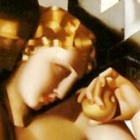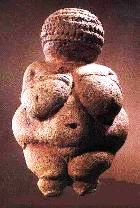Genesis & archaeology
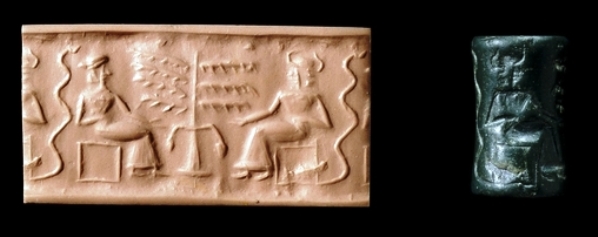
A woman/priestess/goddess sits opposite a seated man/priest/god. The sacred tree or asherah is at the centre and the snakes symbolize fertility. The scene may be linked to the temptation of Adam and Eve in the Garden of Eden. Greenstone cylinder seal, ancient Mesopotamia, 2200-2100BC, with clay imprint of the seal.
- Where did the first people come from? Human beings have always wondered about this. Stories about human beginnings (Genesis is only one of them) can be traced back thousands of years.
- Where was the Garden of Eden? The rivers mentioned in Genesis suggest that the Garden of Eden was in the ancient Fertile Crescent.

What’s the evidence?
In 1932 an archaeologist, E. A. Speiser of the University Museum of Pennsylvania, discovered a seal near the bottom of the Tepe Gawra Mound twelve miles from Nineveh. He estimated that the seal came from about 3500 B.C.
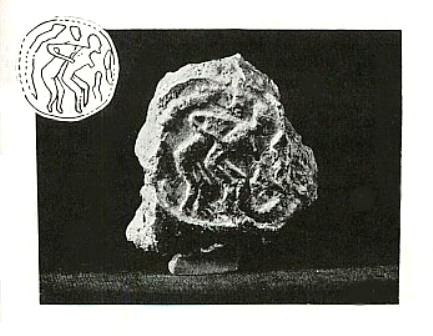
Seal with naked man and woman
It shows a naked man and a naked woman, both bent over as if they were oppressed or downcast. Behind them, partly broken, is a serpent (see drawing in upper left of image).
The seal is small, only about one inch in diameter, engraved on stone, and now held in the University Museum in Philadelphia.
As Speiser pointed out, the image on the seal seems to suggest the Adam and Eve story.
What is the ‘serpent’?
Snakes or serpents are common in ancient mythology – from Adam and Eve, the Greek myth of Medusa, to Australian Aboriginal stories of the Rainbow Serpent.
In the Bible, it is used figuratively to represent Assyrians (Isaiah 14:29), Babylonians (Jeremiah 8:17), the enemies of Israel (Deuteronomy 32:33), all evil people (Psalms 58:4), and even the Pharisees and Scribes of Jesus’ time (Matthew 23:33).
- In Isaiah 27:1 the serpent is spoken of in a mythological context, as ‘Leviathan the fleeing serpent’ who represents the enemies of the Lord who will be destroyed.
- Yet in Exodus the brazen serpent is a symbol of healing, and this may be closer to general usage in the ancient Near East at large.
Despite the fact that they could inflict a painful, even fatal bite, snakes seem to have been part of many ancient religious ceremonies.
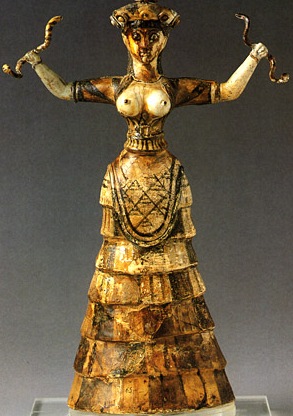
The Minoan Snake Goddess
The statue of the Snake Goddess or priestess (see right) in ancient Crete is an example.
Why a snake?
There is no way of knowing the symbolism behind the statue of a bare-breasted woman holding a live snake in each hand. Perhaps the fact that snakes shed their skin each year made it seem as if the snake had moved on to a new life – resurrection, or life after death.
What we do know is that the snake was important in Near Eastern religions other than Judaism. For this reason it may have been a symbol used by enemies of the Jewish people – and so something associated with evil.
What was the Garden of Eden?
- Nothing seemed more beautiful to desert nomads than a lush green garden. It meant beauty, life, serenity, and plenty of water.
- It also meant prosperity – the name ‘Eden‘ comes from a Hebrew word meaning ‘to be fruitful or plentiful’, and the gardens of the Persians were called ‘paradeisoi‘.
Gardens were well-known in the ancient world, but they were usually reserved for the rich. Great effort was needed to build and maintain them. The point of the story in Genesis is that God gave the garden to Adam and Eve without them having to expend any effort at all.
It represented Nature as it was meant to be, in a time before Sin entered the world.
Where was the Garden of Eden?
- A paradise-like garden is present in much of the ancient Near Eastern literature, especially Sumerian mythology.

- Murals show that Egypt had ornamental pools planted with water lilies in their gardens, for decoration rather than swimming.
- But the Babylonians easily outdid them. A large part of Babylon in the days of Israel’s enemy Nebuchadnezzar II was covered with parks and gardens. The Hanging Gardens, one of the wonders of the ancient world, had terraced gardens held high on great stone arches above the city buildings, and watered hydraulically from the Euphrates.
- In the Genesis story, Eden seems to be located near the Persian Gulf, perhaps at Bahrein, which is also the location of the mythical garden called Dilmun, in the Sumerian myth.
The Trees of Knowledge & Life
People believed that God had made every type of plant and tree for a particular purpose. Each plant was useful in some way.
It was up to humans to discover what benefit they could derive from the plant, and then use it wisely.
- Part of this belief came from practical experience: people saw that native plants could be used to cure illness, stimulate or calm the senses, heal wounds, make food more tasty, etc. Part came from their trust in God.
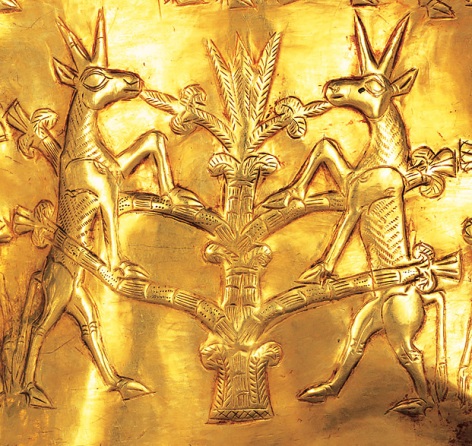
Excavated rhyton (drinking vessel) showing the Tree of Life, Iran circa 1,000BC
The idea may have sprung from the story of the two trees in the Garden of Eden:
- the Tree of Knowledge of Good and Evil, and
- the Tree of Life.
Each of these sacred trees had a particular purpose:
- The Tree of Knowledge made humans aware of the difference between good and evil: only after Adam and Eve had eaten it did they notice their own nakedness, and see it as undesirable.
- The Tree of Life was a common theme in the ancient Near East. In the Gilgamesh epic, Utnapishtim tells Gilgamesh that eating a plant from the bottom of the sea will make him young again. In Egypt the Pharaoh ate from a Tree of Life to sustain him after death. In Sumer, there was a tree of life in the mythic land of Dilmun. The Tree of Life in the Genesis story represents the potential for eternal life, which Adam and Eve cannot have.
In fact, the Genesis stories explain why things are the way they are:
- why humans die
- why childbirth hurts
- why snakes crawl on the ground
- why work is necessary.
 The fruit tree, by the way, was unlikely to have been an apple. It was more likely to have been a pomegranate, an ancient symbol of fertility and plenty.
The fruit tree, by the way, was unlikely to have been an apple. It was more likely to have been a pomegranate, an ancient symbol of fertility and plenty.
Search Box
![]()
© Copyright 2006
Elizabeth Fletcher

